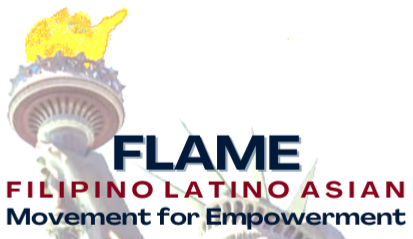features
October 04, 2020 Video on Awakening the Sleeping Giant
New Amicus Brief Exposes AG’s Bad Faith on Election Transparency

“It is outrageous for the Attorney General to threaten citizens with possible felony accusations when they exercise their legal rights to validate election results by inspecting the ballots.”
The Tea Party Patriots Foundation Brief
Last week the Tea Party Patriots Foundation (TPPF) entered their amicus brief in support of the citizen petitioners. CDM Press exclusively learned today that they are being joined by the Filipino, Latino, Asian Movement for Empowerment (FLAME). The new brief contains facts the Carr brief craftily omits:
- “Original ballots in Georgia are the ‘best evidence’ and the only evidence to conduct a valid forensic audit of the public records at issue.”
- “The Court has already ruled the images of the ballot must be turned over and not excluded under any exception under the Act, making the content of the ballots public record.”
- “The Secretary of State of Georgia is already mandated to permit the public inspection of original ballots…”
- “Fulton County did not conduct a transparent collection and tabulation process which has aggravated the erosion of public trust in Georgia elections.”
Open Forum Live PHLV Radio hosted by Josie Harisson, Charlotte Evans, Dolly de Leon, and Victoria Tambunting
Hispanic, Asian Vote Shifted Sharply to the Right in 2020 Presidential Election
December 27, 2020
Lifted from Just the News
President Trump said throughout the campaign that the Democratic Party took African-Americans, Hispanics and Asians for granted, and the message apparently got through to the increasingly powerful voting blocs. Detailed voter analysis by The New York Times released last week shows a massive influx of votes for Trump from the blocs. While Democrat Joe Biden still got the majority of votes from the groups, in cities like Los Angeles, New York, Chicago, Miami and Philadelphia huge swaths of the groups voted Republican.
“The red shifts, along with a wave of blue shifts in Republican and white areas, have scrambled the conventional wisdom of American politics and could presage a new electoral calculus for the parties,” the Times wrote.
The findings were stunning, and no doubt have thrown the Democratic Party for a loop. Before the 2024 election, Democrats will need to figure out if Trump was the key, or if rank-and-file Democrats really are getting fed up.
Take Cook County, home to Chicago. Mr. Biden won it by 50 percentage points over Trump. Some 2,158 precincts shifted right, compared to the 2016 election. Meanwhile, just 1,508 shifted left.
“In particular, Chicago precincts with a lot of immigrants saw more people turning out than in 2016, and many shifted to Mr. Trump,” said the Times.
In areas of the Windy City that include large numbers of people of Mexican descent, Trump received 45% more votes than in 2016, while Biden’s share stayed stagnant. Immigrants from Asia, the Middle East and Eastern Europe also turned out for Trump.
For instance, in Chinatown, Trump’s share of the vote increased by 34% while Biden’s actually dropped — he received 6% fewer votes than Hillary Clinton. Biden’s margin among Asians fell 12 percentage points compared to 2016. (Click here to go Just The News website to read the details.)
Waking the Fil-Am Sleeping Giant, Part 1
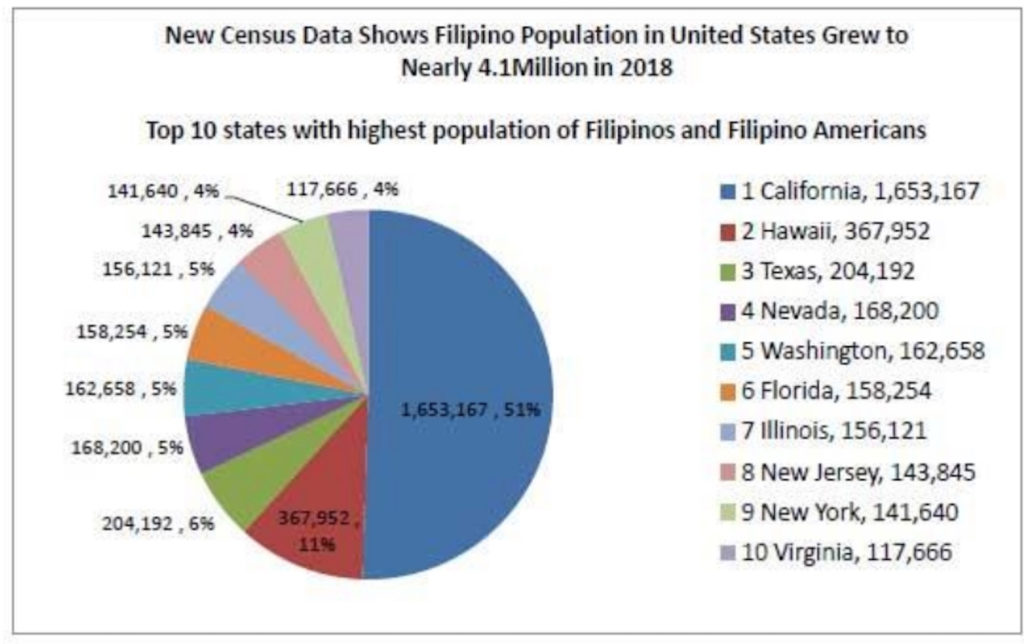
This is the first of a three-part series on Filipino American empowerment:
What an interesting conversation with my Filipino American Uber driver. She had been a U.S. citizen for 15 years, but was adamant in not getting involved and not registering to vote. Her main focus was to make money, do well, live the American dream and send money home to the Philippines. She loved the freedom and opportunity that America gave, but she did not want to get involved. Her view of U.S. politics: it was “all the same” and similar to the corrupt patronage in the Philippines. She saw the two-party system as two sides of the same corrupt coin. She didn’t see how voting could make any difference.
Why is this so?
Nearly five million “legal” Filipinos are estimated in the US. This is extrapolated from the official census 10 years ago. Most are now U.S. citizens. Many immigrated in the last 40 years that followed the waves of Filipino migration in the last 120 years.
Today, we have generations of Filipinos born in the United States and assimilated as Americans of Philippine descent. Half are 35 years old or younger. The approximate 400,000 Filipino Americans in Hawaii make up the biggest ethnic group in the state. The 1.7 million Fil-Ams in California are a constant presence with strong untapped potentials to raise their voices in the state.
But how are Filipino Americans exercising their voice and influence? The statistics show that less than half of the eligible population is registered to vote. Nearly five million- strong, Filipino Americans should at least have five congressional representatives. Today we arguably have zero representation in the U.S. Congress.
Moreover, the Fil-Am community also has the potential of influencing not only U.S. elections, but also the elections in the Philippines. This is because of the 2003 Dual Citizenship Law enacted in the Philippines. The estimate is that there are more than a million Filipino Americans who are eligible for dual citizenship. This gives them the privilege to also vote in the Philippine national elections. Instead of the mere 200,000 who cast a vote in the 2016 Philippine elections, the potential of one million voters in 2022 could be a determining factor.
It can be observed that there is a predominant sense of invisibility. The voice of the Fil-Am community is hardly heard. There are many exceptions. But the challenge and the exciting potential is in Awakening the Fil-Am Sleeping Giant from its silent slumber.
The purpose of this article, and the 3-part series, is to understand the behavior of ethnic groups like Filipino Americans in the US. Can a course of action be charted to reverse the present situation? How?
How can the Filipino American community and its youth be engaged to see their inherent potential and be empowered into action?
The short answer lies in education. It lies in shifting to a mindset that is grounded on our self-esteem and pride of identity as a people. It involves the understanding of how centuries of foreign occupation in the Philippines had led to the squelching of our voice. It is acknowledging how the virtue and valor of Filipino Americans have contributed to US nation-building in the last 400 years. It is seeing and realizing that today, our time has come!
In rediscovering our pride of identity and exceptional history, we move forward. We stand tall in continuing the legacy of our forefathers with greater contribution in society. The next two parts of this series will present the historical record, from 1587 up to the present time.
Jorge “Jerry” Perez de Tagle, PhD, who lives in the US and the Philippines, is an author, a change management practitioner and thought leader in the private and public sector. He taught at Syracuse University, New York and has his PhD in Social Change, Honoris Causa, and Candidacy in Organization Development. (FPACC). jerrypdt@gmail.com
Waking the Giant: 400+ years of exemplary Filipino presence in U.S. history, Part 2
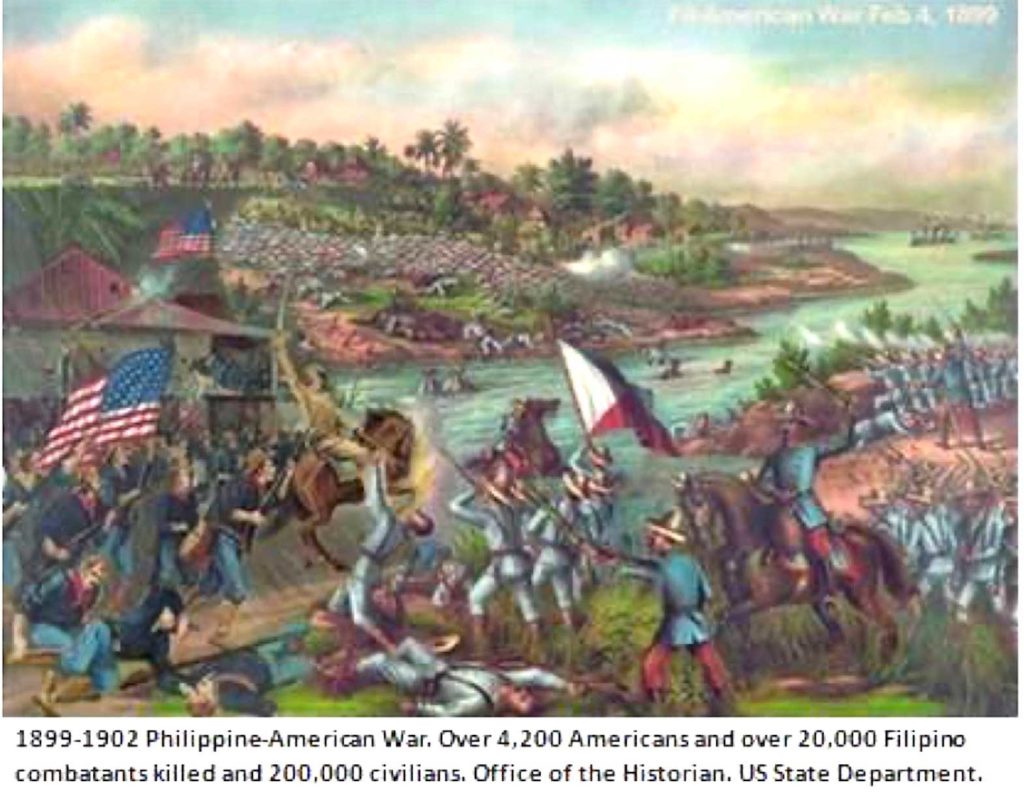
In Part One of this 3-Part series, the question of HOW to awaken the five million Filipino Americans was raised.
The short answer lies in education, in shifting to a mindset that is grounded on self-esteem and pride of identity as a people. It involves the understanding of how centuries of foreign occupation in the Philippines had led to the squelching of our voice. It is acknowledging how the virtues and valor of Filipino Americans have contributed to U.S. nation-building in the last 400 years. It is seeing and realizing that today, our time has come!
As an initial exploration, we can divide the 400+ years of exemplary Filipino contributions in the U.S. into three distinct Episodes:
- Filipino Exploration and Settlements. The first 200 years from 1587-1763.
- Filipino Freedom Fighters. The second 200 years from 1812-2014. Seven historic military milestones defines this episode. The first three are covered in this Part 2 of the series: 1812-1861-1899. The next four military milestones are covered in Part 3 of the series.
- Filipino-American Valor and Leadership. The last 100+ years from 1899-2014, present time. This Third Episode helps define the present Fil-Am identity. Four military milestones of 1911-1941-1951-2014 and two key events on 1927-1930 and 1965 arecovered in Part 3 of this series.
1587-1763 Filipino Explorers and Settlers
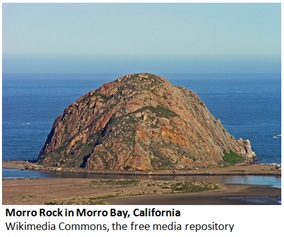
Did you know that the first Filipinos landed more than 400 years ago, in what is now known as California? This was 34 years before the Plymouth Pilgrims celebrated Thanksgiving in 1621.
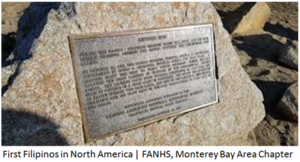
The year is 1587, October 17, when two intrepid Filipinos called “Luzon Men” where the first to set foot on shore, in what’s known today as Morro Bay, California. The Filipinos explored the area as crew members from the Spanish Galleon Nuestra Señora de Esperanza. After a few days, one of the Filipinos was slain by local inhabitants while exploring Morro Bay.
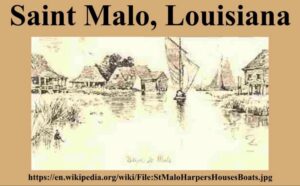
By 1763, thirteen years before the US Declaration of Independence, Filipinos had villages known as the Louisiana Settlement in Saint Malo. More settlements evolved in Louisiana to be known as the Manila Village in Barataria Bay.
1812-2014. Filipino Freedom Fighters
Filipinos fought alongside American Patriots against the British. From different sides, Filipinos served as Confederate and Union soldiers, as adversaries in the Philippine-American War, as allies in the Korean War, and now as Commanders and Generals in the US Military.
Filipino Freedom Fighters provide a unique perspective in their contribution to the evolution and development of the United States of America. It is a nation building journey of more than 200 years, from its inception, up to today’s superpower status.
In the 1812 American War of Independence against the British “Manilamen” fought under the command of General Andrew Jackson in defense of New Orleans.
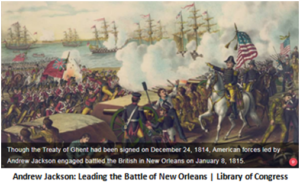
“Battle of New Orleans, where Filipino Americans, known as “Manilamen”, played a decisive role in 1815 in manning the artillery defenses, which allowed American forces to repulse enemy forces during the battle.”
1861 American Civil War. Filipino gallantry was demonstrated in both the Union and the Confederate Army.
Corporal Felix Cornelius Balderry, a Filipino-born in the Philippines served in the Union Army, with the 11th Michigan Volunteer Infantry Regiment, who fought in the siege of Atlanta.
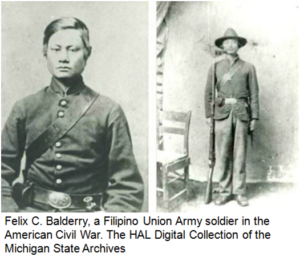
1899 Philippine-American War
Many are not aware that the American icon and author, Mark Twain, was vehemently against the American incursion in the Philippines. It was a bloody war from 1899-1902, that killed 25,000+ combatants, (4,200-7,000 American and 20,000 Filipino). The civilian casualty and devastation due to the famine, disease, and genocidal hostilities of the war, were estimated to run from 200,000 to 1,000,000. This was an unimaginable 5-20% of the country’s 5 million population at that time. In the province of Samar occurred the Balangiga Victory by Filipinos, and the retaliatory Samar Massacre that ordered the province to be turned into a “howling wilderness…kill every one over 10”.
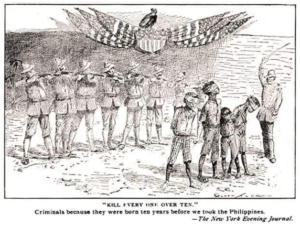
The imperialist and racist justification of President William McKinley was to occupy the Philippines and “civilize our little brown brothers.” This has been misrepresented as part of a $20-million colonial purchase of the Philippines by the U.S. from Spain on December 10, 1898, in the Treaty of Paris. This marked the beginning of the U.S. as a global power.
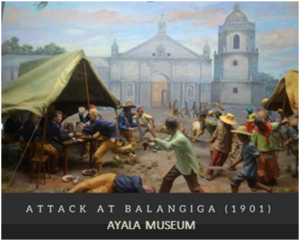
The historical misrepresentation lies in the fact that six months earlier, the Philippines was already a sovereign nation. It had celebrated its Declaration of Independence from Spain on June 12, 1898. The Philippines is the First Constitutional Republic of Asia. What is usually omitted is that the Philippine Revolutionary Army already controlled the whole country from the occupying Spaniards; and had 15,000 troops surrounding the fort in Manila. The Treaty of Paris that ceded the Philippines to the US was illegal. Thus ensued the Philippine-American War which led to the US Commonwealth occupation of the Philippines until July 4, 1946.
Filipinos have had a pioneering and exemplary journey in exploring, living, and fighting for the democratic ideals of the United States, shoulder-to-shoulder, in most instances, with fellow Americans from 1587 to 1902. The conclusion of this 3-Part article will scan the highlights of the next 100+ years from 1901-2014; and explore how this has molded the Filipino American identity of courage and leadership.
Jorge “Jerry” Perez de Tagle, PhD, lives in the U.S. and the Philippines. He is an author, a change management practitioner and thought leader in the private and public sector. He taught at Syracuse University, New York and has his PhD in Social Change, Honoris Causa, and Candidacy in Organization Development.
Waking the Giant: Exceptional Fil-Am courage, leadership in U.S. nation-building, Part 3 of 3
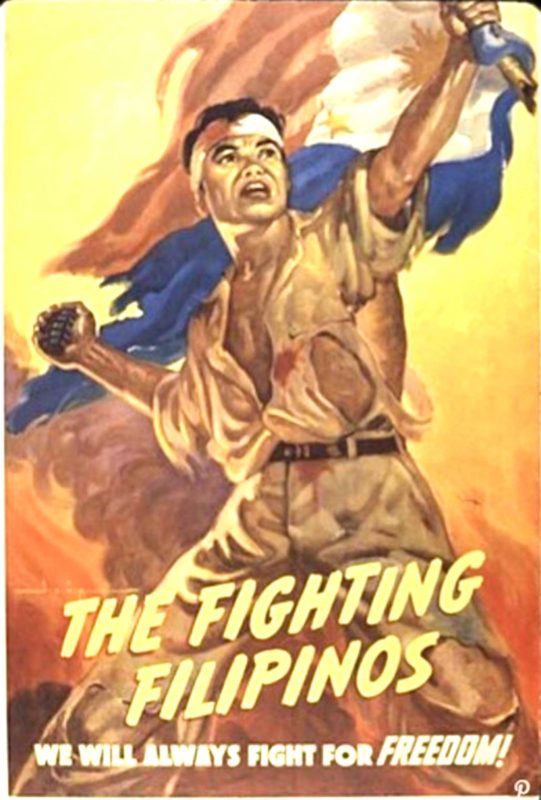
In the first part of this three-part column, we started with an observation of Filipinos and Asian Americans not fully engaged in civil society, and not registered to vote. We asked why? We asked what can be done?
By acknowledging in our identity, that we stand on the shoulders of giants; by rediscovering that Filipinos have a 400-year history of exceptional contribution in U.S. history; we stand tall with pride. As we understand and study further our 400-year history, we see in the present a new light of pride and empowerment. We are continuing the legacy of our ancestors. We Raise our Filipino American Voices in our communities, cities, states, and federal government. With empowered confidence we engage in society. We influence and lead in civil society and shape the state-national narrative. We reawaken the slumbering giant!
In this third part of the series, we review the last 120 years of contributions that now define our present-day Filipino American identity. It is an identity of courage and leadership.
Last 100+ Years
Four Fighting Filipino Milestones.
1911: First Filipino US Medal of Honor
1941: Highest Distinctions in WW2
1951: Korean War-Greatest Filipino Victory
2014: First Filipino-American Commander of a Nuclear Aircraft Carrier
Two Exceptional Episodes.
1927-1930: California and Washington Racist Riots
1965: Revolutionize the Civil Rights – Farm Labor Movement in America
- The first Asian American recipient of the Medal of Honor was awarded to Jose Nisperos for his gallantry. In 1917, as the U.S. entered World War I, the National Guard was created in the Philippines to join the war effort.
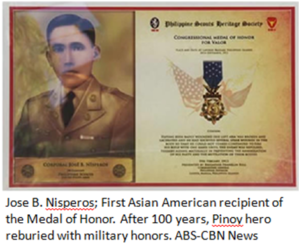
1945: Highest Distinctions in WW2 for Filipino Fighters
Among the most decorated units in World War 2 were the 1st and 2nd Filipino Infantry Regiments. Their deeds where unfortunately not widely known. The 7,000 Filipino soldiers endured discrimination during their training and where mistaken for Japanese Americans outside the base. However, their distinctions of valor and courage were unprecedented. “A total of 50,000 decorations, awards, medals, ribbons, certificates, commendations and citations had been awarded to personnel assigned to these two regiments for their service in the New Guinea and Philippines campaigns.” Wikipedia.

1951: Korean War, Greatest Filipino Victory
“The Battle of Yuldong was the greatest Filipino victory in the Korean War. A mere 900 Filipino fighting men withstood the night attack of an entire communist Chinese army that numbered 40,000 men at peak strength” (Inquirer). 7,500 Filipino soldiers were sent to Korea as Allies to the US led United Nations command. Major General Robert Soule, Commander, 3rd US Division, observed that “The ‘Fighting Filipinos’ are the best allied unit under my command.”
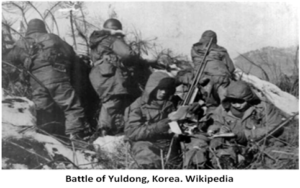
2014: First Filipino Commander of Nuclear Aircraft Carrier. Capt. Ronald L. Ravelo assumed command of USS Abraham Lincoln in August 2014.
The first Filipino commander of a nuclear aircraft carrier in the US Navy is indeed a historic milestone. This is in light of the more than 100-year history of racism, suppressive laws and policies that Filipinos struggled with. It is a story of success and the resilient spirit of the Filipino to succeed as well as the US spirit to transform itself.

Two Exceptional Episodes.
1927-1930. Washington – California Racist Riots and Filipino Resilience.
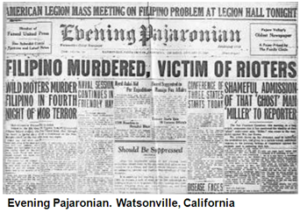
Filipinos in the US by the 1930s numbered around 45,000. In 1927, anti-Filipino riots in Yakima Valley of Washington took the homes and lives of Filipinos. Riots erupted in 1929 against Filipino farm workers in Exeter, California. Again in January, 1930, four days of rioting, destruction, and death were reported in the Evening Pajaronian news in Watsonville, California.
- Revolutionizing Civil Rights – Farm Labor Movements in America
Larry Itliong led Filipino farm workers in a bold Delano, California Grape strike in September 8, 1965. Larry invited Cesar Chavez and Mexican farm workers who joined the walk-out, a week later, on September 16. This was an unprecedented Filipino initiated and led farm worker strike that fought against the exploitation of farm workers.
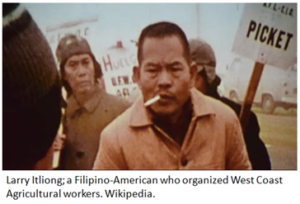
The historic and victorious five-year strike united Filipinos and Mexicans. They fought together for farm worker rights within the broader struggle of the civil rights movement. This revolutionized the farm labor movement in America and around the world. Larry Itliong passed away in 1977. Cesar Chavez later gained international acclaim for the Delano Strike and its impact in unionizing farm workers around the world.
What is exceptional here is the historic coalition of the Latino-Mexican farm workers and Filipinos. In solidarity, victory was achieved. Filipinos, also referred to as Asian Latinos, showed success in solidarity.
It is also worth noting how Filipinos share a similar history of colonization, and oppression with Asians, Latinos, African Americans, and Native Americans. There is a natural solidarity with people of color. This was also seen in 1901 as Filipinos fought together with African Americans who joined the Philippine ranks during the Philippine American War.

CONCLUSION
We have from 1587-2014, a broad summary that acknowledges the proud legacy of previous generations. A comprehensive review of further Fil-Am contributions in the arts, science, and commerce is the subject of a future article. This 3-Part series is a starting exploration, that aims to question existing perspectives with a new narrative.
Hopefully this will spur debate, discussion, and deepen the primary source research. The goal is to shift into a new mainstream narrative and perception, of what it means today to be a Filipino American. The strength, self esteem, courage, and leadership of the Filipino American runs deep. It runs in the veins of the present generation, from the literal blood, sweat, and tears of our ancestors.
Today, Filipinos make up the third largest immigrant population in the US, after the Mexicans and the Chinese. The task at hand for the present generation of Fil-Am leaders is to rediscover, shout out loud, and institutionalize in our schools and community culture, our passion and pride: The 400-Year History of Exceptional Filipino Contributions in the United States.
Jorge “Jerry” Perez de Tagle, PhD, lives in the US and the Philippines. He is an author, a change management practitioner and a thought leader in the private and public sector. He taught at Syracuse University, New York and has his PhD in Social Change, Honoris Causa, and Candidacy in Organization Development.
Crab mentality – where does it come from?

Can the “crab mentality” of disdaining the success of others ever change? Is this behavior unique to Filipinos? Or is it also seen among other Asians, Latinos, and communities who have had a history of being oppressed?
Johnny, a Filipino, is an upcoming success in his career-business and with his community. He is beginning to be recognized. However, there seems to be a negative backlash and unfounded criticism of Johnny that’s coming from other Filipinos. Instead of lauding and supporting Johnny, some fellow Filipinos seem to disdain him.
Is this the classic “crab” behavior? (Crabs in a bucket pull back the other crabs who are moving ahead.) Where is this coming from? Can this be changed?
Studies in human behavior show that one’s crab mentality comes from a personal insecurity or low self-esteem, which is usually unknown to the individual. It may be that the feeling of disdain, jealousy, and antagonism is justified. There is usually a sense of being self-righteous and virtuous. But, why is this behavior prevalent in particular societies? I have seen it across the various cultures and countries. It seems to be common with societies and groups that have experienced suppression, bullying, and oppression for a period of time, across generations and decades, if not centuries.
Crab mentality is learned as part of societal acculturation, adaptation, and survival. It is learned by parents and elders to suppress the success-linked behaviors of their children and of newcomers in a tribe. This is the adaptive behavior of the family to survive and escape the wrath of the masters in the community. Intelligent and success behaviors in children were seen as dangerous for the people who held power. The masters who wielded power over the group knew that intelligent and self-determined children would grow up to question, rebel, and subvert the existing power structure of the community.
Once revealed and seen as dysfunctional behavior that doesn’t serve the goals of the individual or group, a new behavior can be consciously taken. A change in culture can be managed. Societies do this by enacting laws that conform to its moral code.
Organizations explicitly identify their Core Values and Code of Conduct to define their group culture and how they aspire to communicate and treat each other. Disciplinary Action, reprimand, and expulsion from group membership can be exercised for those deemed to be miscreants. Undoubtedly, this can also be abused by the group. Imperfect as it is, a Code of Conduct and Core Values are the ethics, ideals, and aspirations that enable group self-management.
As a practical example, what follows below is a draft of the Code of Conduct and Guiding Principles of the FilAmVoice.US to address undesirable behaviors of crab mentality, gossip, corruption, character assassination, and divisiveness.
CORE VALUES: (Timeless. See Code of Conduct)
- Vision and Values Led
- Integrity and Transparency
- Inclusive, Bayanihan, and Communication
- Servant Leadership
CODE OF CONDUCT & GUIDING PRINCIPLES:
Vision and Values Led
“The act or power of anticipating that which will or may come to be. A vivid, imaginative conception or anticipation”;
“Adherence to moral and ethical principles; soundness of moral character; honesty.“
- A bias for action is leadership from a desired Vision of a future. This Vision is not necessarily defined by the limitations of the present nor by the considerations of the past. It is a conscious choice for optimism-positivism and not for negativity-pessimism.
- The foundations of our rock-solid unity to overcome rancor and disagreement, is based on the strength of our common vision and the confidence on our shared values — for Family, Freedom, and Faith. We strive for unity, and compromise when necessary. We address conflicts from the greater good of our common vision and values.
Integrity and Transparency
“The state of being whole, entire, or undiminished”;
- Deepen the research and understanding of Fil-Am contributions. Celebrate the 400 years of Fil-Am exceptionalism in US history. Inculcate Fil-Am pride of identity and history of victory over suppression and oppression.
- Transparency of intention, agenda, financial income-expense, and clarity of measurable outcomes are crucial. Conflicts of interest are handled with full disclosure and transparency. Colonial legacies of corruption are overcome by setting an example of the highest ethical standards. Valor-virtue-values are the foundations in raising the Fil-Am voice of undiminished integrity.
Inclusivity, Bayanihan, and Communication
- Build a culture that is inclusive. Individuals and groups of Filipino descent, racially and ethnically are welcome. Membership is open to anyone who is aligned and committed to support the vision and values of the Fil-Am Voice USA Movement. All Philippine tribes, (a group or class of people with strong common traits, values, or interests), languages, ethnicities, regions, provinces, religions are acknowledged.
- Bayanihan(the spirit of communal unity and cooperation) volunteerism and initiative is the Filipino term of helping and supporting each other and the community to succeed. Create a culture of recognition that edifies (uplift, build up) each co-volunteer and leader. Consciously eradicate any colonial vestige of “divide and rule-crab mentality” and back biting. We focus, accept, work with, and build on the talents, strengths, and capability of volunteers; and not on their limitations.
- Seek to live with the truth through primary source, direct experience-communication and not through secondary source hearsay. Differences of viewpoints, analysis, and opinion are settled through Servant Leadership communication and edification. There is a specific focus to avoid any colonial vestige of ad hominem (Attacking an opponent’s character or motives rather than answering the argument or claim. Appealing to one’s prejudices, emotions, or special interests rather than to one’s intellect or reason.) and personal criticism.
Servant Leadership
“It begins with the natural feeling that one wants to serve, to serve first. Then conscious choice brings one to aspire to lead.” Robert Greenleaf
10 Principles:
Listening, Empathy, Healing, Awareness, Persuasion, Conceptualization, Foresight, Stewardship, Commitment to the Growth of People, and Building Community. (The Journal of Virtues & Leadership)
Jorge “Jerry” Perez de Tagle, PhD, lives in the US and the Philippines and is an author, change management practitioner and thought leader in the private and public sector. He taught at Syracuse University, New York and has his PhD in Social Change, Honoris Causa, and Candidacy in Organization Development.
